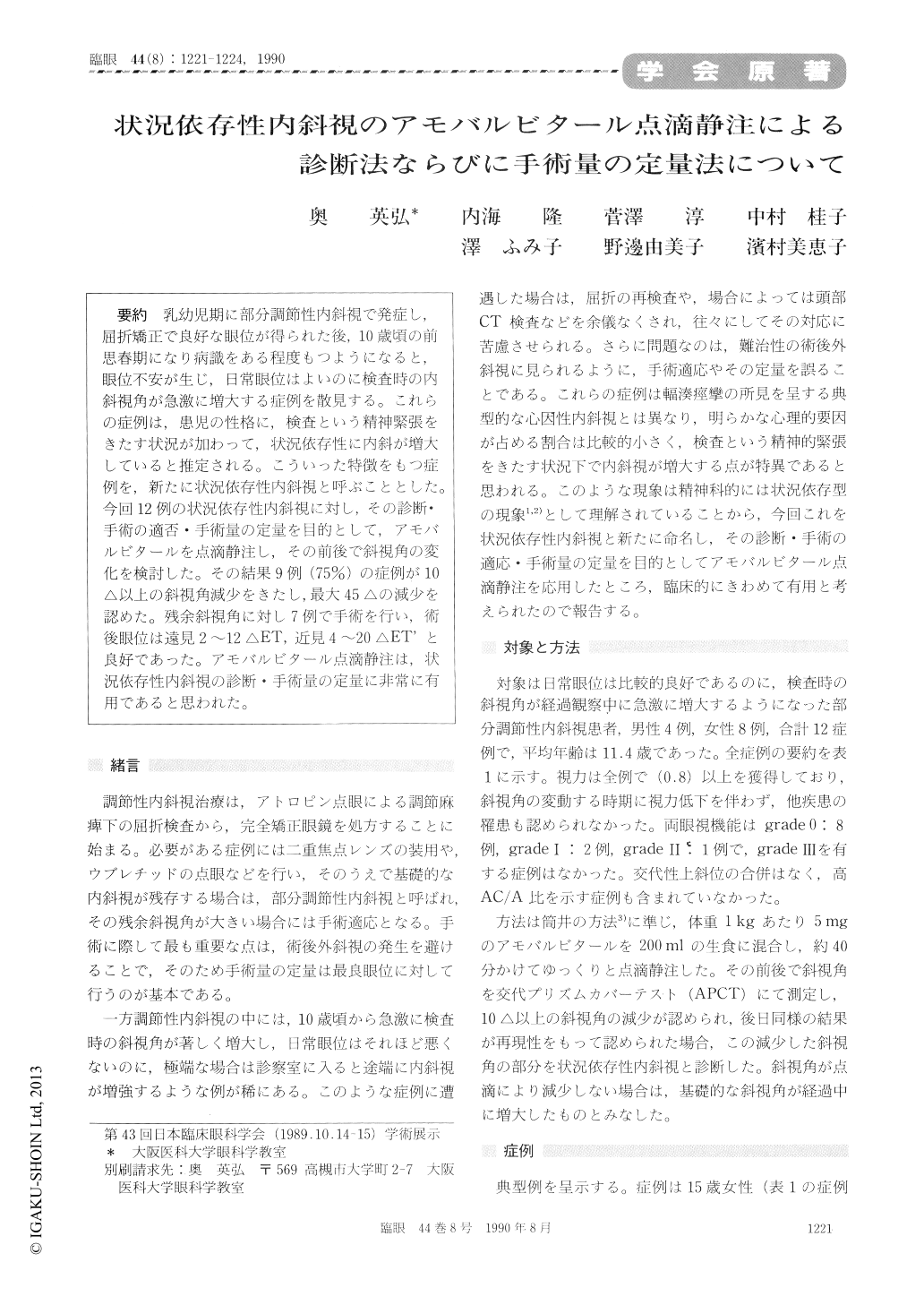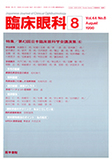Japanese
English
- 有料閲覧
- Abstract 文献概要
- 1ページ目 Look Inside
乳幼児期に部分調節性内斜視で発症し,屈折矯正で良好な眼位が得られた後,10歳頃の前思春期になり病識をある程度もつようになると,眼位不安が生じ,日常眼位はよいのに検査時の内斜視角が急激に増大する症例を散見する。これらの症例は,患児の性格に,検査という精神緊張をきたす状況が加わって,状況依存性に内斜が増大していると推定される。こういった特徴をもつ症例を,新たに状況依存性内斜視と呼ぶこととした。今回12例の状況依存性内斜視に対し,その診断・手術の適否・手術量の定量を目的として,アモバルビタールを点滴静注し,その前後で斜視角の変化を検討した。その結果9例(75%)の症例が10△以上の斜視角減少をきたし,最大45△の減少を認めた。残余斜視角に対し7例で手術を行い,術後眼位は遠見2〜12△ET,近見4〜20△ET’と良好であった。アモバルビタール点滴静注は,状況依存性内斜視の診断・手術量の定量に非常に有用であると思われた。
Some patients with partially accommodative esotropia wearing fully corrected glasses start to show, at around 10 years of age, large manifest esodrift during ophthalmological examinations. This esodrift is absent in their ordinary life. This esodrift seemed to he generated by the inherent character of the patients and the situation of the examination resulting in exaggeration of tension and awareness about the eye position. We namedthis esodrift as situation-dependent esotropia.
We evaluated the effect of small-dosis intra-venous barbiturate in 12 patients with situation -dependent esotropia. Nine patients, 75%, respond-ed by significant reduction in the angle by 10 to 45 prisms. We performed surgery on 7 cases to correct the residual angle as observed under barbiturate. Postoperative eye position was fair with 4 to 12 prisms ET at far fixation and with 4 to 20 prisms ET' at near fixation . This method was thought to be useful in the diagnosis and surgical planning of the condition.

Copyright © 1990, Igaku-Shoin Ltd. All rights reserved.


